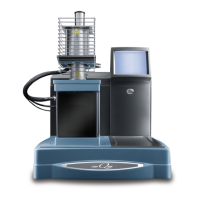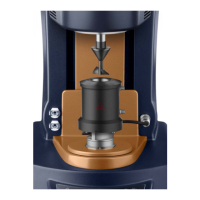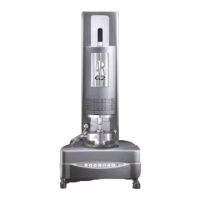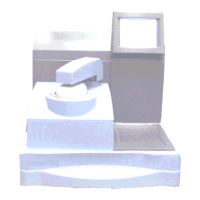Appendix B
B–24 TA I
NSTRUMENTS
TGA 2950
When used with semi-pressurized sample
containment, constant reaction rate mode
becomes even more powerful. The vapor
pressure which builds up inside the sample
container limits the rate of reaction of the
sample. This allows the reaction to complete at
a nearly constant rate and temperature. The
reaction progresses more uniformly throughout
the sample because vapor pressure gradients in
and around the sample material are substantially
reduced. The onset of higher temperature
reactions is effectively suppressed until the
completion of lower temperature reactions.
Constant reaction rate mode is preferred for any
sample where it is important to limit or control
the rate of reaction. These may include pyro-
technics, self-heating reactions, auto-catalyzing
reactions and gas diffusion reactions. Constant
reaction rate mode is also a good choice when it
is important to accurately determine the transi-
tion temperature at a given reaction rate.
Another area where constant reaction rate
heating can be helpful, is when the sample
material exhibits a relatively large and some-
what constant background weight change, onto
which is superimposed a relatively small transi-
tion. If the decomposition rate threshold is
chosen to be close to the background percent/
minute at the maximum heating rate, then the
heating rate will only be changed significantly
when the smaller transition occurs.
Derivative of weight change curves that are
plotted versus temperature may appear cyclic
and have negative peaks as well as positive
ones. This effect is caused by the automatic
application of cooling whenever the rate of

